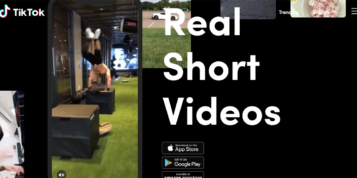Facebook pages provide marketers with a powerful tool for targeting key audiences and allowing potential customers to discover, share and engage with content. However, getting a campaign started can be a daunting prospect. In an ideal world, you could just create an engaging promotion, such as a prize draw, contest or voucher, on Facebook and bang, it would go viral. But the reality is rather more nuanced. The fact remains that even the most innovative Facebook campaign will be wasted if traffic isn’t being driven to it in the first place.
So how can brands start driving users to their pages? The number one way Facebook users discover fan pages is through Facebook Ads. It’s an extremely powerful tool and as a consequence, it is essential that Facebook Ads appeal to audiences and are run effectively. Simple things like the image or the title you use can make the difference between success and failure when it comes to advertising.
Here are a few more practical, easy-to-implement and highly effective strategies to help businesses maximise the performance of their Facebook Ads.
Section one: Which image should you use?
Tip #1: Ads with people, especially close-ups of faces and eyes, tend to get a higher click through rate. Give your ad a human touch.
Tip #2: Use colours in your image which contrast with Facebook’s shades of blue— they command more attention and stand out from the rest of the website.
Tip #3: It’s best to upload horizontal (landscape) images to ensure you’re maximizing the space available, which is 110×80 pixels.
Tip #4: Include branding in your image. Only a tiny percentage of people exposed to your ad will actually click on it but lots will see it so it’s important that you maximise your branding. The great thing is that you can opt to ‘pay-per-click’ for your Facebook advertising so that if someone learns about your brand by looking at your ad but doesn’t click, you just brand exposure for free!
Tip #5: Scale your image to as large a size as possible. This means zooming into your image so that it extends as close to the edge on all four sides as possible without losing the sharpness of the image. For example, an image that contains one close up of a face will be more appealing than one that contains full body shots of multiple people, all of whom will appear so small in the photo that you won’t be able to see any details.
Tip #6: Another trick you can try after your image has been created is take a large step away from your monitor and see if you can still make out what the image is from far away—if you can’t tell, the image isn’t as clear as it could be for a good ad.
Tip #7: Eliminate unnecessary surroundings around your main image, either by giving it a transparent background or a white one. You don’t want to distract people from what you want them to notice.
Tip #8: However, don’t use an image of a person if this doesn’t fit with what you’re promoting – ads with an image that’s relevant to your advertisement tend to be most successful.
Section two: What title should you use?
Tip #10: Ask questions. People who read questions to themselves are often sub-consciously answering them also. If your question is compelling enough, they will want to click through to see the answer.
Tip #11: Limit titles to one lineandtry titles that will elicit some kind of reaction from your audience, like making them laugh.
Section three: What text should you use?
Tip #13: Be clear with your message – what are you offering and why should a user care?
Tip #14: If you’re targeting users based on certain “Likes & Interests” or demographic information, tie that information into your copy. For example, an ad targeting users living in Palo Alto, CA, can fare better if the words “Palo Alto” or “Bay Area” were in the copy, making the ad appear more relevant to the viewer seeing it.
Tip #15: Ask people to like your brand— telling your audience exactly what you want them to do is a surprisingly effective methods of getting users to do what you requested. For example, “Winter is here and so is our seasonal eggnog! Click ‘like’ if you think this sounds delicious!”
Tip #16: Don’t forget a call-to-action! Try messages like “Click here!” or “Enter now!” to let users know exactly what they’re supposed to do within the interaction.
Tip #17: Try not to sound like a large corporation in your body message. Address your audience as people.






